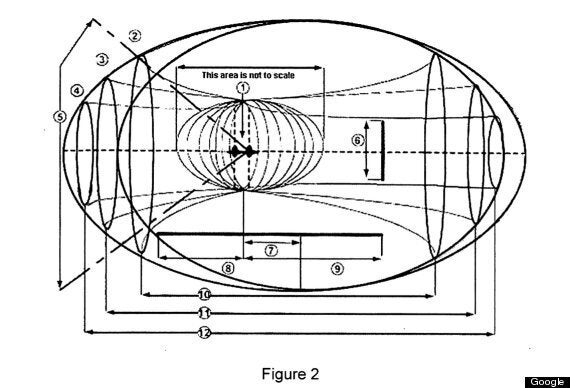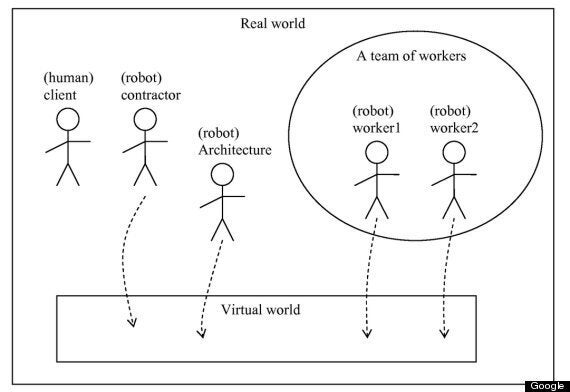Travelling in time through any means other than living normally in a four-dimensional relativistic universe is almost certainly impossible.
Yes, it's true that we do actually have a current world record holder for scientifically verified time-travel (thanks to the chronological quirks involved in long stays on the Space Station). In fact, even Prof Brian Cox says travel forwards in time can be achieved within the accepted laws of physics.
Still, it's hard. And traveling backwards is a different prospect. Leaving aside the basic philosophical conundrum of cause and effect, we also have the notorious 'chronology protection conjecture' devised by Prof Stephen Hawking which roughly says backwards time travel is impossible, because physics we don't know about probably says it is.
That doesn't mean that people aren't willing to have a go at building a machine themselves. And it also doesn't mean people won't try and game the US Patent System into granting them some official recognition for achieving something that -- virtually by definition -- cannot be done.
In fact, four patent applications currently exist on Google's US Patents search engine. You can't blame them, really - if they turned out to be right, that would be one hell of a lucrative piece of paper. Let's take a look!

"Method of gravity distortion and time displacement" [US 20060073976 A1]
"A method for employing sinusoidal oscillations of electrical bombardment on the surface of one Kerr type singularity in close proximity to a second Kerr type singularity in such a method to take advantage of the Lense-Thirring effect, to simulate the effect of two point masses on nearly radial orbits in a 2+1 dimensional anti-de Sitter space resulting in creation of circular timelike geodesics conforming to the van Stockum under the Van Den Broeck modification of the Alcubierre geometry"
The first patent on our list is also probably the most famous, and that's no comment on its technical proficiency. Instead the patent's relative fame is down to its connection to one fantastic urban legend, and what appears to be one awful human being.
Filed in April 2006 by Marlin B. Pohlman, who was going through chemotherapy for Hodgkin's lymphoma at the time, the patent itself is... confusing. But the basic idea is pretty clear, at least: to try and warp space time with gravitational fields, and jump across the gaps. Pohlman used a piece of maths called Robert Geroch’s Splitting Theorem to claim that he could control those jumps, and use his process to effectively travel in time.
The real reason the application caused a stir in the media when it was filed, though, is because of its loose connection to the legend of John Titor. Titor was a supposed time-traveller, who popped up on internet forums in the early 2000s claiming to be a visitor from the future. After Titor disappeared, it was noted that Pohlman's patent application had some similarities with ideas written about by the time traveller years before. Spooky.
Alas, the patent has not since been approved, which as Mysterious Universe notes was probably a good thing. Pohlman, it turns out, is a pretty dark individual who in 2013 pleaded guilty to drugging and abusing four women. At the trial in Oregon he was asked by Deputy DA Christopher Ramras if he was the same man as appeared on the patent application, and why it didn't work.
"I had to do something while I was going through chemo," said Pohlman. "I had nothing better to do. ... I think I made a mathematical error."
Method of space compression time dilation machine [WO 2013088425 A2]
"A method for making space compression, time dilation machine (20), depending on the known principles of space contract, and accompanied time dilation, in addition to a new assumption, that space and time are wavy, if the 3-dimensions of space are compressed, the 4th-dimension time which is vertical on the space is dilated, such that the time waves frequency (ticks) are decreased, due to the elongation of the observed length of the time waves."
The most recent patent on the list, this patent is claimed as an invention by Wasfi Alshdaifat. It's a little hard to decipher, and filled with typographical errors, but the basic idea is pretty simple. Alshdaifat claims, essentially, to be able to split the fourth dimension and travel within it - effectively travelling across time.
Alshdaifat's invention would purportedly use gamma rays, highly concentrated, to "dilate" and slow down time. His machine includes a helpful and rather accessible list of ingredients, including "a hydraulic circuit", "six adjustable bases", "six sets of convex lenses" and an "electronic control unit".
It's an oddity, but the list of other patents he has applied for ("Multiple fixed and rotatable basins washing machine", "Motorized steam brush" and "Compact fishing apparatus") suggest an adaptable and mechanical mind. Perhaps he will be able to respond to the patent office's request for more details accordingly and clear up some of the muddy waters in his application.

"Practical Time Machine Using Dynamic Efficient Virtual And Real Robots" [US 20090234788 A1]
"A method for time travel, which allows an object or a group of objects to travel into the past or the future, as well as a method to cut objects from the past or future and paste them to the current environment. The present invention, called the practical time machine, requires teams of super intelligent robots that work together in the virtual world and the real world to generate a perfect timeline of planet Earth."
This application made by Mitchell Kwok in 2009, actually reads more like a thought experiment. Kwok proposes the creation of a virtual world which is built by super intelligent robots to contain a perfect timeline and recreation of the actual planet Earth. The time traveller who wants to travel into the past simply has to assign a time to which he will travel, and thanks to the work of 'atom machines' which alter the world to resemble its past state will then be "there".
The machines would also be able to recreate objects and people from the past, cutting and pasting them into the present.
All the patent relies on is a set of super-intelligent machines capable of monitoring and moving every atom in the world on demand, for no very good reason. What's so hard about that?
"Traveling method" [WO 2012046284 A2]
"A traveling method for instantaneous travel by fitting a time axis forming an event in a four-dimensional space in special relativity to a sine curve."
Filed in 2010 by Takahiro Towata, this invention is designed to transport us at very, very high speeds and so move humans around the time line of history. His patent really is quite simple - if you can travel at speeds faster than light, you might be able to play around in interesting ways with the passage of time. Of course, that's a pretty big 'if' and relies very much on Einstein. In that sense it's little more than technically-worded sci-fi. Interesting read, though.